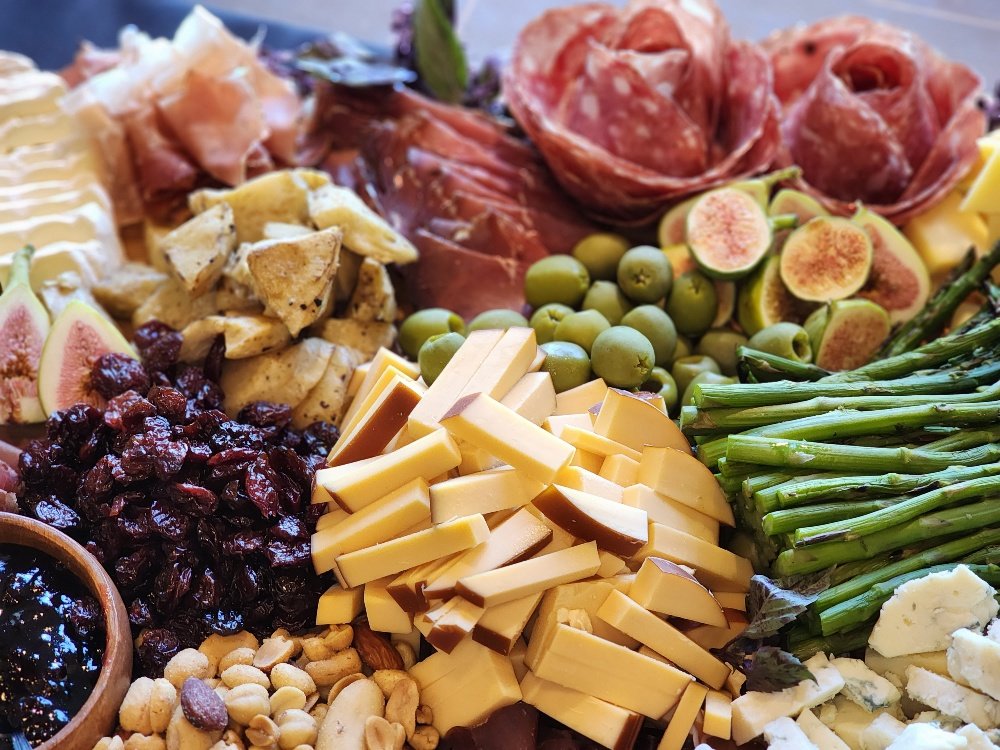how to make a charcuterie board
Creating a charcuterie board is a simple yet impressive way to offer a variety of flavors and textures for any gathering. This popular appetizer platter typically features an assortment of cured meats, cheeses, fruits, nuts, and spreads, arranged in an appealing and accessible way. Whether you're hosting a formal dinner or a casual get-together, learning how to assemble a charcuterie board allows you to customize it to suit your guests and the occasion. With a few basic steps and tips, you can craft a visually stunning and delicious centerpiece for your table.
how to make a charcuterie board for beginners
Choose Your Board
Select a wooden board, large plate, or serving tray to arrange your items.Pick the Meats
Include a variety of cured meats like salami, prosciutto, or pepperoni. Aim for 2–3 types, sliced or rolled for easy serving.Select the Cheeses
Choose at least two or three types of cheese with different textures, such as a soft brie, a hard cheddar, and a crumbly blue cheese.Add Crackers and Bread
Include a mix of crackers, breadsticks, or sliced baguettes for pairing with the meats and cheeses.Incorporate Fresh and Dried Fruits
Add grapes, berries, apple slices, or dried apricots for sweetness and color.Include Nuts
Scatter almonds, walnuts, or pistachios for crunch and variety.Add Spreads and Condiments
Place small bowls of honey, jam, mustard, or a savory spread for dipping and pairing.Balance the Arrangement
Start by placing larger items (cheeses, bowls) on the board first, then fill in gaps with meats, crackers, and smaller items.Garnish for Presentation
Use fresh herbs like rosemary or edible flowers to enhance the look of your board.Serve and Enjoy
Provide small plates, utensils, and napkins for easy serving. Set it out at room temperature for the best flavors.
how to cut cheese for charcuterie board
Cutting cheese for a charcuterie board is about making it easy to serve while creating visual variety. Start by considering the cheese's texture and shape:
Hard Cheeses – Cut into thin slices, wedges, or small cubes for easy snacking. Examples: cheddar, gouda, or parmesan.
Soft Cheeses – Serve whole with a small knife for spreading, or pre-slice into small wedges. Examples: brie or camembert.
Semi-Soft Cheeses – Slice into sticks or triangles for a neat presentation. Examples: havarti or Monterey Jack.
Crumbly Cheeses – Break into natural chunks or crumbles and place them in a small pile. Examples: blue cheese or feta.
how to fold meat for charcuterie
Folding cured meats for a charcuterie board adds texture and elegance while making them easy to pick up. Here are some simple techniques:
Ribbons – Fold thin slices of meats like prosciutto or salami into loose waves by pinching one edge and letting the rest fan out. Layer these for a full, delicate look.
Rosettes – Form flowers by folding a slice of salami in half, then rolling it tightly. Repeat with additional slices to create a layered rose effect.
Cones – Roll slices like prosciutto or coppa into cone shapes for an elegant touch.
Accordion Folds – Fold slices back and forth into a zigzag shape, then stand them upright or layer them.
Stacks – For thicker cuts like pepperoni, stack slices in neat piles for a simple, structured option.
charcuterie board garnish
Garnishing a charcuterie board adds a finishing touch that enhances both the look and flavor. Here are some ideas:
Fresh Herbs – Use sprigs of rosemary, thyme, or parsley to add greenery and a natural aroma.
Edible Flowers – Add a pop of color with pansies, nasturtiums, or marigolds. Ensure they are food-safe.
Leafy Greens – Tuck in small lettuce leaves or arugula for a fresh, textured backdrop.
Citrus Slices or Zest – Add thin slices of lemon, orange, or lime, or sprinkle zest for a bright, vibrant look.
Drizzle of Honey – Pour a light stream of honey over cheeses or near fruits for added sweetness.
Spices or Seeds – Sprinkle nuts with paprika, or scatter sesame seeds for subtle flavor and texture.
Decorative Twigs – Add cinnamon sticks or star anise for a warm, seasonal feel.
A charcuterie board is a simple yet effective way to offer a variety of flavors and textures for any occasion. By choosing a mix of meats, cheeses, fruits, nuts, and garnishes, and arranging them thoughtfully, you can create a balanced and appealing spread. Whether you're new to making boards or have some experience, these tips for cutting, folding, and garnishing will help you put together a great presentation. With a bit of planning, you can create a charcuterie board that’s both functional and enjoyable.



